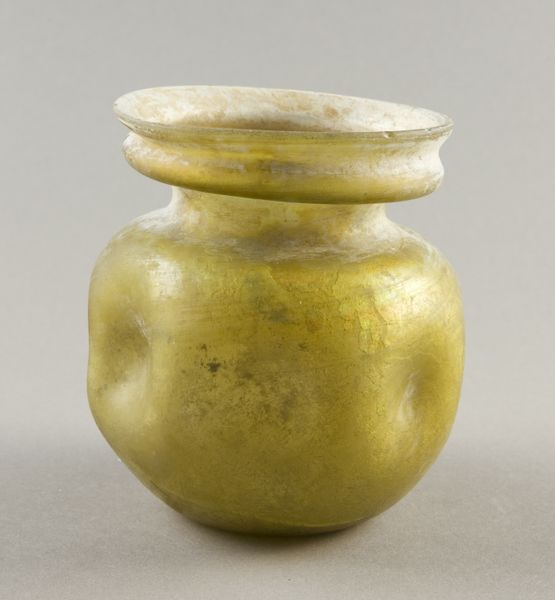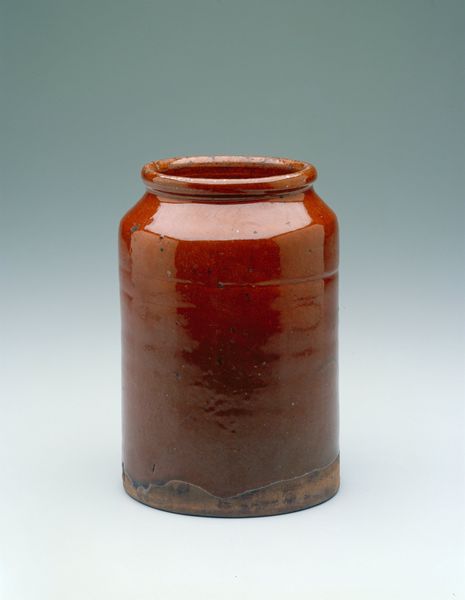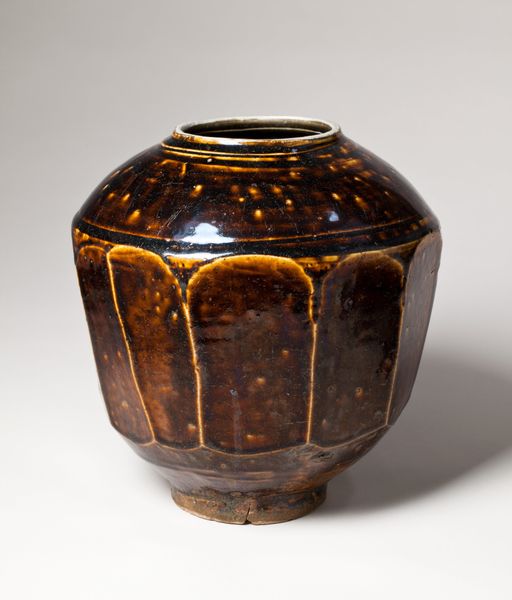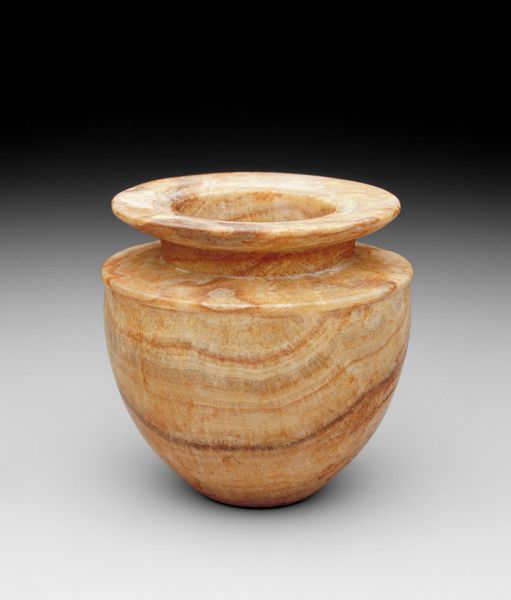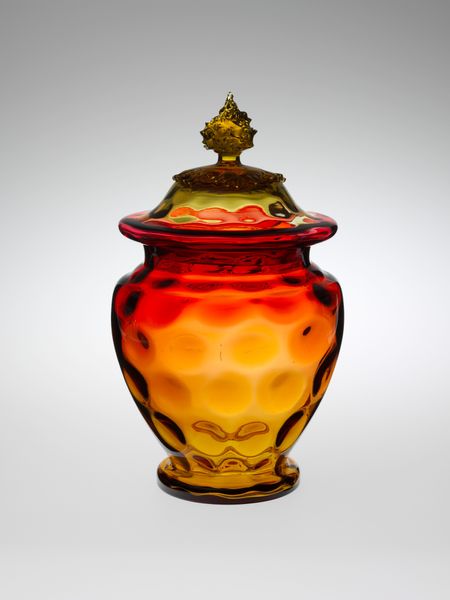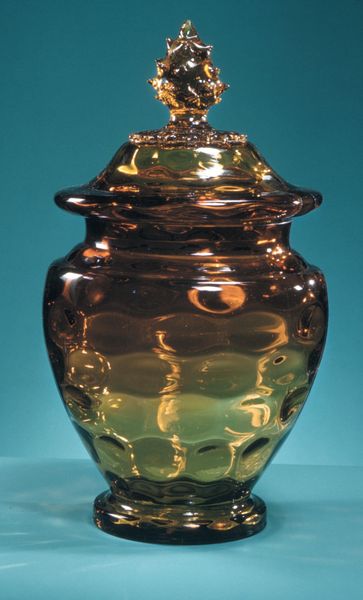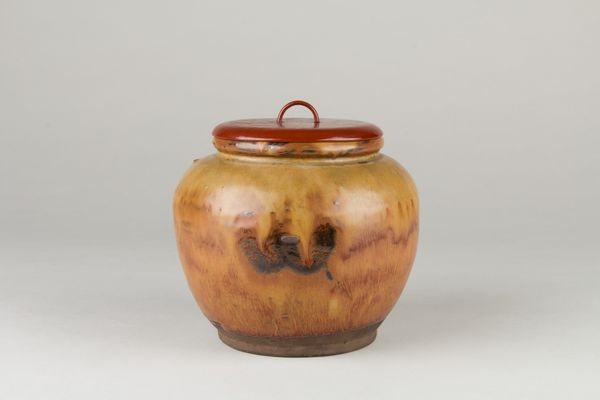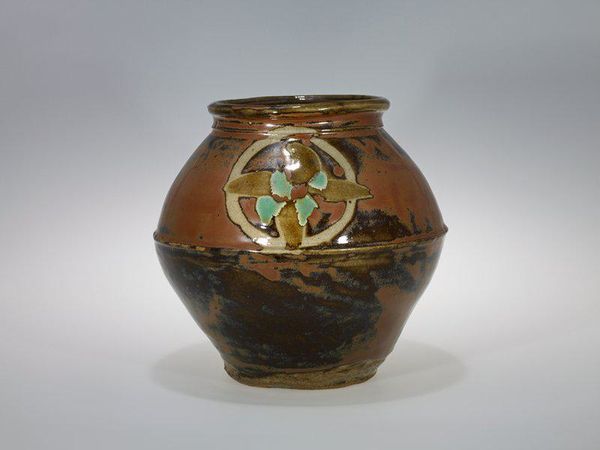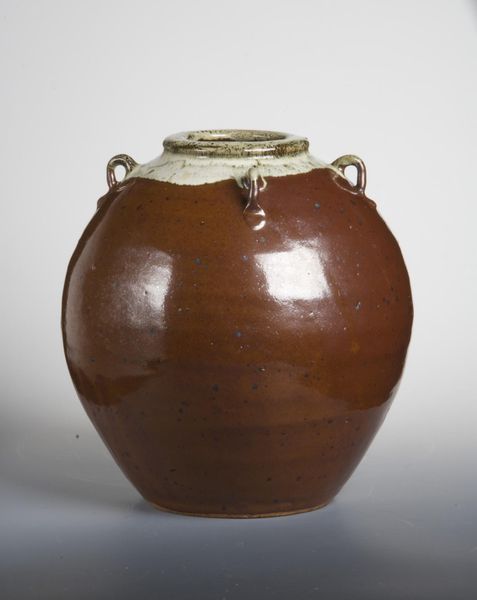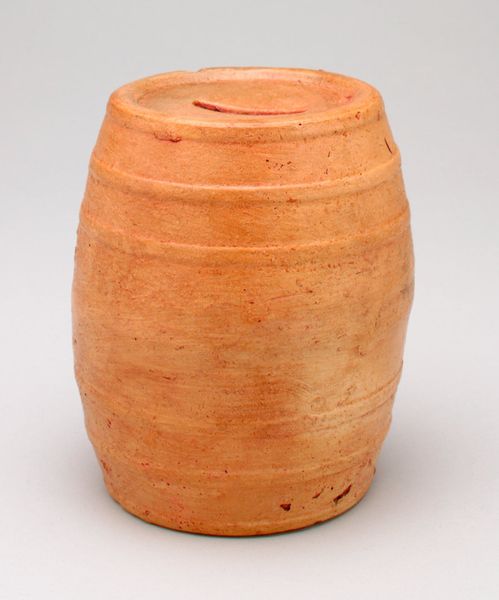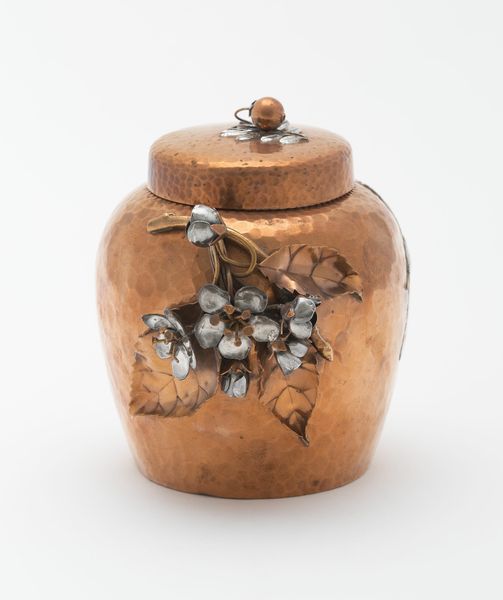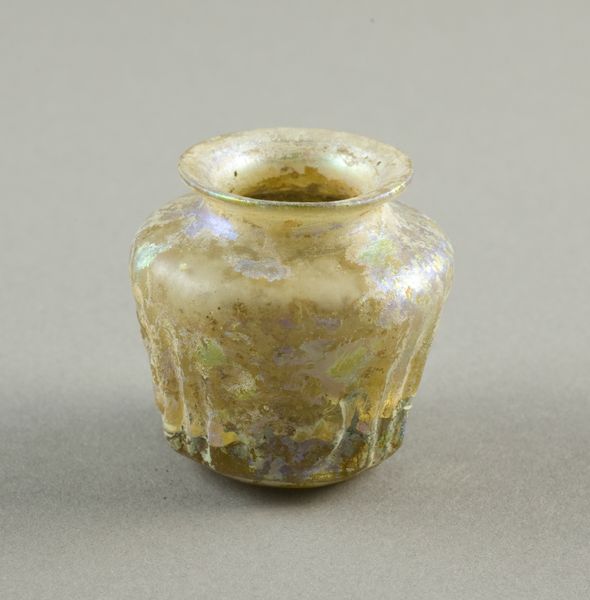
ceramic, ink, earthenware
#
folk-art
#
ceramic
#
vessel
#
ink
#
earthenware
#
stoneware
#
folk-art
#
decorative-art
Dimensions: 23.9 × 21.3 cm (9 3/8 i× 8 3/8 in.)
Copyright: Public Domain
Curator: Here we have a stoneware jar, crafted around 1830, likely for utilitarian use but now a striking piece of American folk art, signed by E. W. Farrar. It’s currently held in the collection of The Art Institute of Chicago. Editor: It possesses a certain rustic charm, doesn’t it? The earth tones and simple form convey a sense of practicality, a direct link to its function. The color variations are captivating, a melange of autumnal hues that evoke a quiet sense of history. Curator: Indeed. Looking closely, the glaze variations indicate the firing process itself, perhaps an uneven distribution of heat or the natural impurities within the earthenware affecting the final coloration. Consider this: the placement of such jars in a household; they were indispensable tools but also reflections of local craftsmanship. The very making of these objects tells a story of community, labor, and access to resources. Editor: But let’s not overlook the formal aspects. Note the banding near the top with this wonderful dark pigment almost tattooed above a gently curving silhouette. And those looped handles lend this piece a subtle animation. There is an attention to rhythm, both through the horizontal lines and those tiny repeating waves around the rim. It invites you to turn it, observe it, hold it. Curator: Absolutely. These design elements aren’t merely decorative; they're evidence of regional styles and individual makers’ techniques. What were the typical conditions Farrar labored under? How did his materials shape his approach? Were such decorations also a statement of self? It makes one consider the democratization of aesthetics – where utilitarian became beautiful in everyday life. Editor: Fair points. Ultimately, this jar, in its quiet, unassuming way, reminds us how we imbue simple forms with cultural value. Its surface, though unassuming, bears witness to past craft, labor, and intentional artistry, transforming functional use into visual art. Curator: Yes, reflecting how necessity and artistry so often converged in the making of material culture. A vessel preserving not just contents, but cultural heritage itself. Editor: Exactly. A simple form resonating long past its initial use, carrying history into our present.
Comments
No comments
Be the first to comment and join the conversation on the ultimate creative platform.
